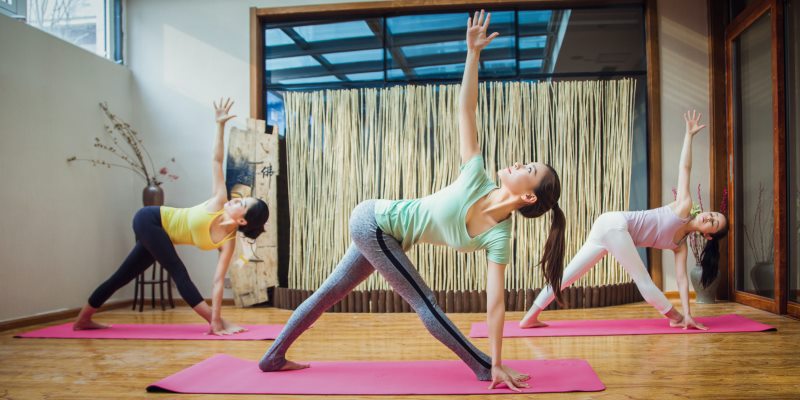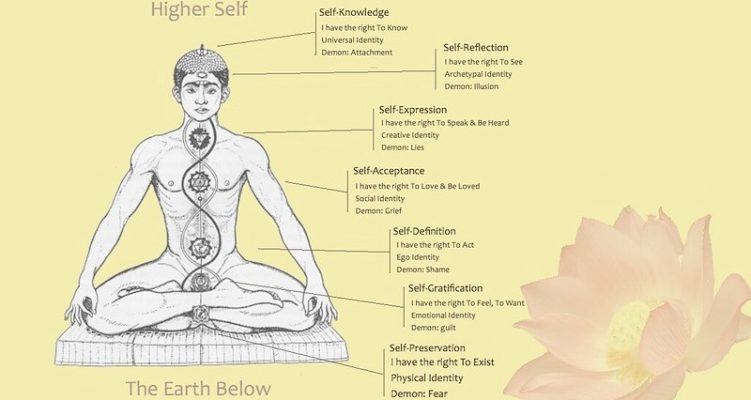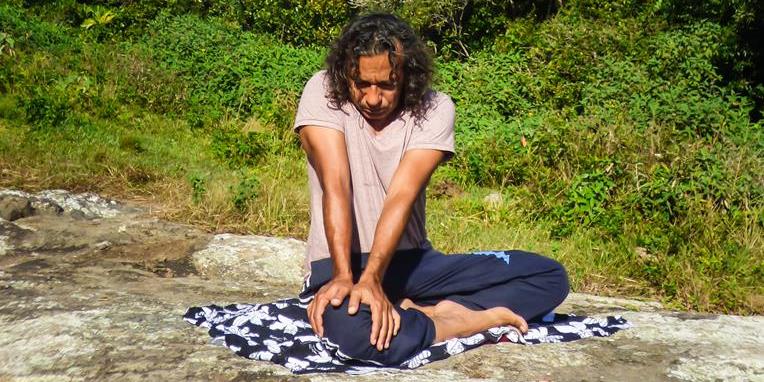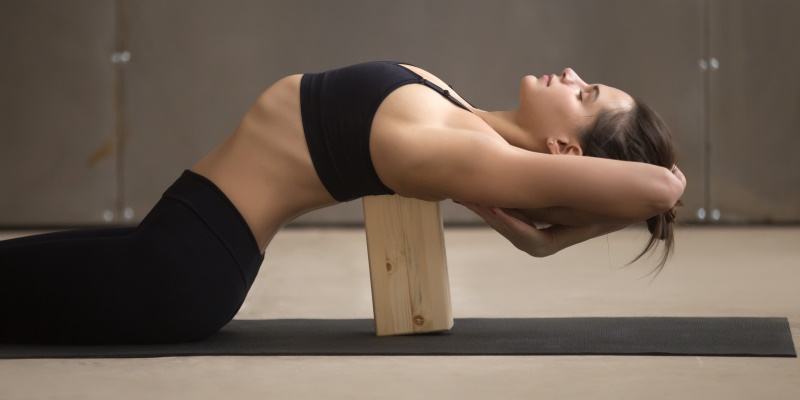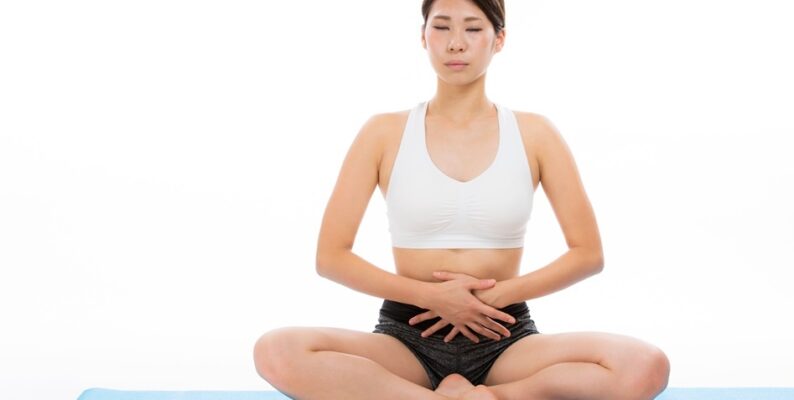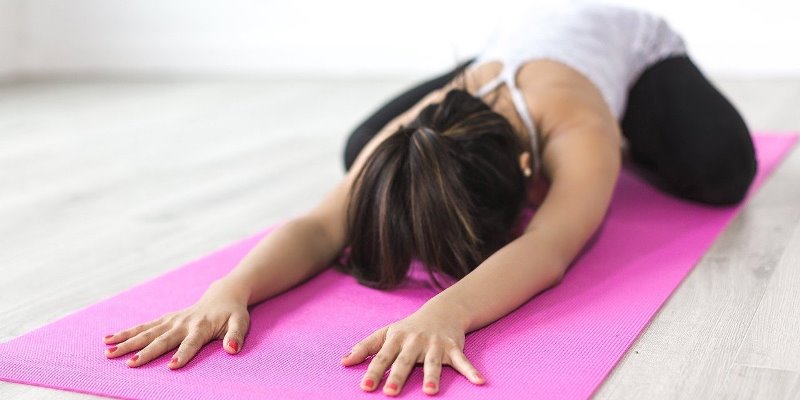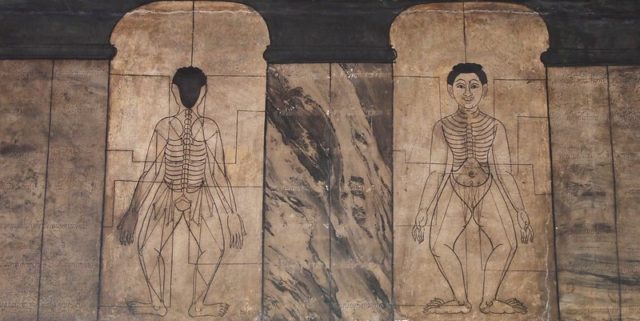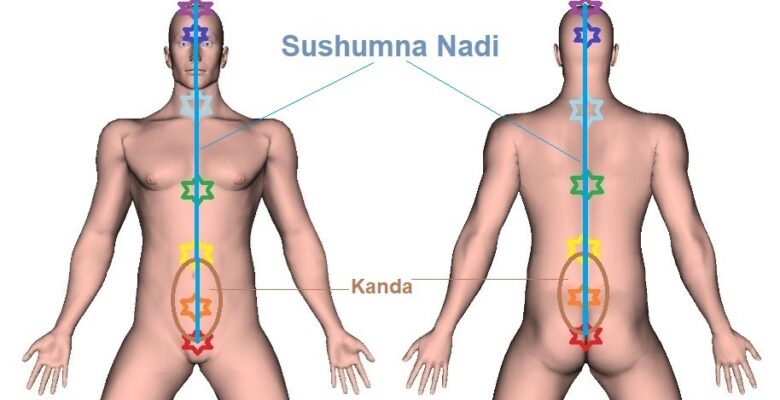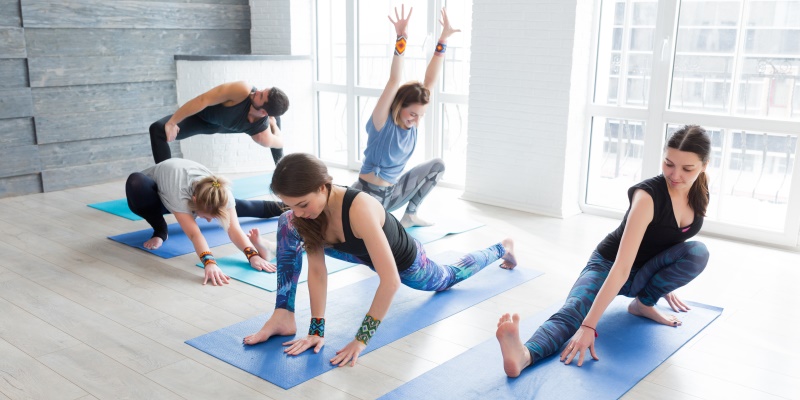
Nowadays, Asanas (plural of Asana) refer to any Yoga posture, but originally the word Asana was a term for a sitting meditation pose — in fact a word that comes from the Sanskrit noun āsanam, which means the (act of) sitting or sitting position.
In the Yoga Sutras of Patanjali (thought to have been written between 200 BCE – 400 CE), “asana” is the third limb of his eightfold path of Yoga, and is described as a position that is “steady and comfortable, ideal to meditate.”
History of Yoga Asanas
It was only between the 10th and 11th century that early texts on Hatha Yoga started to mention non-seated Asanas; for example, the Vimanarcanakalpa manuscript, attributed to the sage Marichi and considered one of the earliest texts to expand on the meaning of only seated asanas, described the Mayurasana (Peacock pose) — a balancing posture.
The Goraksha Sataka (or Goraksha Paddhathi), also written around the same time by Gorakhnath, mentions a list of 84 classic Asanas, supposedly revealed by the Hindu deity Lord Shiva, yet the text only describes two seated Asanas in detail.
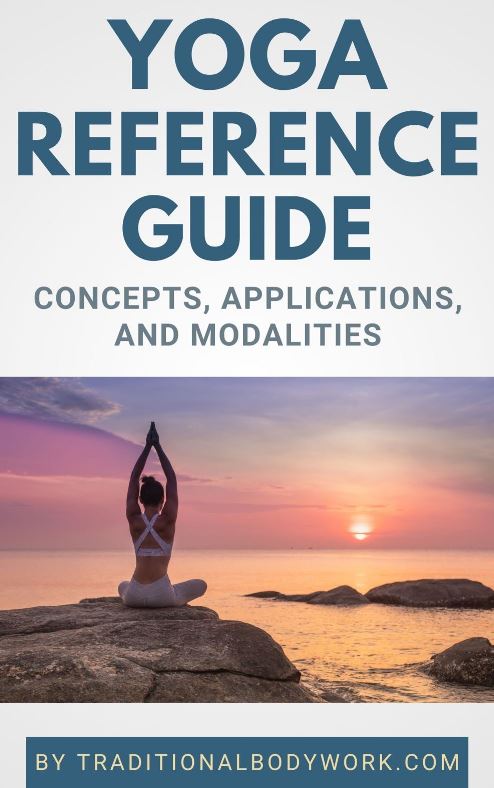
Later on in the 15th century CE, the Hatha Yoga Pradipika, a classical fifteenth-century Sanskrit manual on Haṭha Yoga, written by Swatmarama, also mentions 84 Asanas, but only describes 15 and gives emphasis to 4 seated Asanas. Around this time there are also records of relief statues in temples depicting Yogis using different Asanas (not only seated).
However, it’s only by the 17th century CE that more non-seated Asanas started to appear and become an important component of the Hatha Yoga practice. The Hatha Ratnavali by Srinivasa is considered one of the earlier texts to attempt an actual listing of 84 asanas, and also the Gheranda Samhita and the Shiva Samhita are important texts on Hatha Yoga, mentioning a variety of Asanas.
From the mid-19th century on, the growing culture of physical exercise in India influenced the creation and expansion of new Asanas and modalities of Yoga. Many of these new Yoga modalities, often referred to as Yoga as Exercise, which emphasized disciplining the body through Asanas, reached the West in the 20th century. One of the first books to actually depict a huge number of Asanas (around 200) with detailed descriptions and photos is Light on Yoga, written by Iyengar in 1966; it became a worldwide bestseller.
We can see that Asanas have been created at different times by different masters, a few being ancient, some being medieval, and many now commonly practiced poses are actually very recent, developed in the 20th century. Examples of the latter are the Adho Mukha Shvanasana (Downward Facing Dog) and the Surya Namaskar (Sun Salutation sequence) Asanas.
Purpose of Asanas and the Aim of Yoga
Traditionally, the idea behind the use of Asanas was primarily to prepare the body for the spiritual aim of Yoga; we can see it as one of the tools to achieve a state of meditative consciousness (Samadhi), known also as Self-Realization or Enlightenment. Basically, having a healthy body would give you a stable vessel to practice Pranayama, Mantra repetition and Meditation, which would lead to attaining the final goal of Yoga.

However, there are different ways of viewing the place and importance of Asanas depending on the Yoga lineage and style; for example, the act of doing the Asanas can be considered an act of meditation in itself, as we can cultivate awareness, relaxation and concentration while in the poses. Or it can be viewed as a hindrance, a distraction or not useful to the real goal of Yoga — there are Yoga styles that only make use of the classical seated Asanas, that is, postures to meditate, like Sahaja Yoga.
As said earlier, it was only in the 20th century, through a development of Hatha Yoga focusing particularly on the physical postures, that Yoga became popular around the world as a form of physical exercise and relaxation, many times totally devoid of any spiritual goal.
Nevertheless, Yoga and the application of Yoga Asanas also started to be used as a therapeutic modality, with the goal to alleviate or cure certain health conditions, such as abdominal, back, chest, leg, shoulder or neck pains, but also reproductive or genital disorders and dysfunctions, traumas and emotional disorders, stress and anxiety, among many other conditions.
Moreover, by using Asanas one can purify and open the Yoga Nadis (Prana Energy Channels) and promote health benefits associated with the various individual Nadis and with the Chakras that lie along the Sushumna Nadi. This latter Nadi is generally considered the primordial Nadi, connecting the base Chakra to the crown Chakra, being also responsible of activating and conducting so-called Kundalini Energy.
Yoga Asanas — Health Benefits, Contraindications, and Risks
In general, the benefits of a Yoga practice that uses different Asanas to train the body and mind are considered to be many, such as:
- Improvement of flexibility, strength, and balance;
- Reducing stress and anxiety;
- Alleviating or curing lower back pains;
- Alleviating or curing head, neck, and shoulder pains;
- Reducing sleep disturbances;
- Improvement of cardio and circulatory health;
- Aiding weight loss;
- Specific therapeutic use, such as in Restorative Yoga;
- Improvement of respiration, energy and vitality;
- Increasing focus, concentration, confidence and awareness.
These are some of the most common benefits that most people may obtain with a regular Yoga practice. However, as with any type of exercise, when starting to practice Yoga postures you need to be careful and take into consideration some contraindications.
Many Asanas are considered inadvisable and should be avoided or modified if you have any medical conditions, such as back, neck, shoulder or knee injuries; carpal tunnel syndrome; heart problems and high blood pressure; insomnia; or if you are pregnant or menstruating, to name some examples. It’s important to choose a competent Yoga instructor that will guide you into doing the poses in a safe way, and discuss with her/him your pre-existing health conditions, if any.
Doing Yoga poses is considered safe when they are performed correctly, however some known risks of the practice can be muscle strains, general sprains and tendinitis (tendonitis); back injuries; overheating and dehydration (especially if doing Hot Yoga); destabilizing joints; among others.






